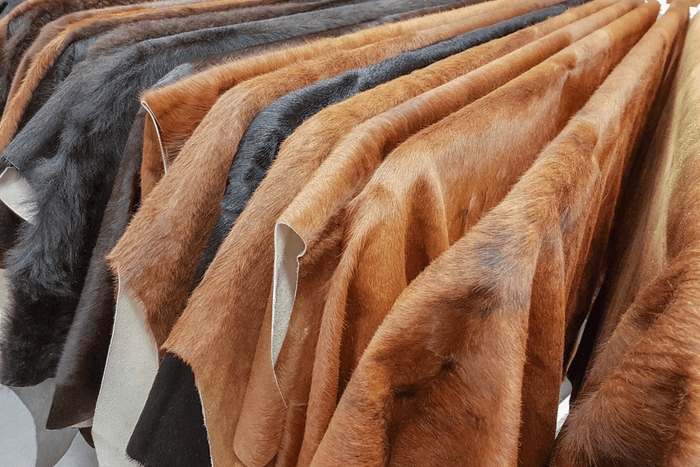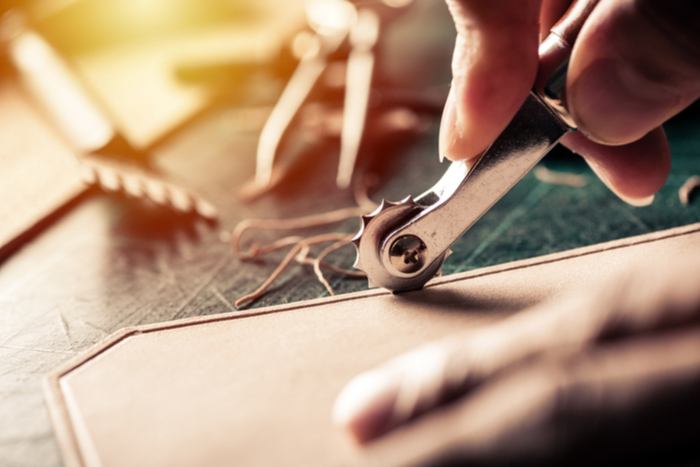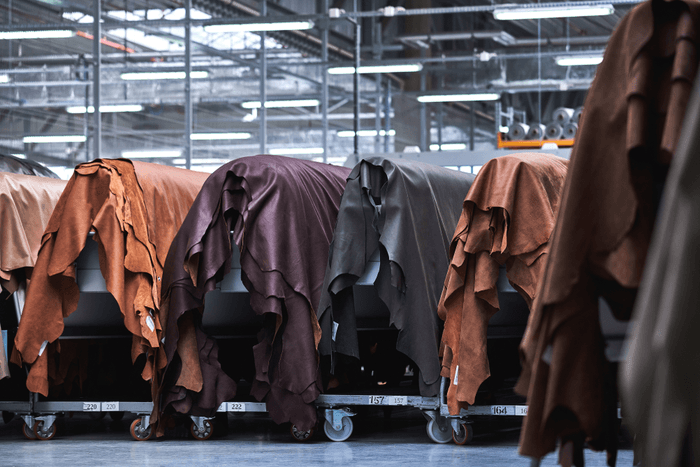All About Leather
How Much Does Leather Cost?
Have you ever wondered how much does leather cost? And why some leather items cost more than others? Well, there is no cookie-cutter answer to this question because the price of leather is determined by many different factors. The most important thing to keep in mind is that just because a leather item is pricier doesn’t necessarily mean that it’s better quality.
Besides the obvious differences, like comparing bonded to top grain leather, there are also not so obvious ones that you may not know even affect the price of the final product. It is also imperative to mention that price ranges can differ from country to country and due to currency exchange rate fluctuations. Therefore, any prices given here are simply to have an overall idea of what to expect when searching for your dream leather bag.
Therefore, without further ado let’s dive right into.
The Origins of the Hides
The origin of the animal hides that are used to make the leather will play a huge role in how they turn out in terms of quality and therefore price. For example, the European region is renowned for having the best quality leather due to the quality of the hides produced in the animals. This is made possible by favorable weather conditions, as the animals are rarely exposed to insect bites. Plus, European animals are generally allowed to grow at a natural rate with very little human intervention. And the absence of growth hormones in their system enables them to grow naturally strong and tight hides.
Now, leather that originates from a place like South America, for example, will have a much lower leather yield and as a result, lower quality. This is largely because the animals have increased exposure to bug bites and growth hormones. And also on most occasions, they’re not given the chance to grow up to an optimal age.
So, how can we compare the prices of different regions? It’s very hard to be honest. If hypothetically we obtained two exactly same pieces of hide and made a small unbranded handbag from it in South America and Europe, European handbag will cost more due to higher labor costs and taxes. If we are talking about a small handbag made out of full grain or top grain leather of identical quality, tanning and dying methods, the difference could be 120-160 USD to 50-80 USD in favor to South American producers.
However, as mentioned above, Europeans have an advantage to higher high quality leather yields, which in turn allows them to make more of superb leather and thus push the prices down a bit. So a small top quality European handbag, not of a fashion powerhouse, could cost between 100-140 USD, while South Americans would not even make such handbags and opt for lower quality ones.
Where is the Leather Tanned?

In addition to the tanning methods, which can play an important role on the final price of an item, it’s also important to look at where the leather was tanned. Italian leather is usually of the best quality simply because the industry there places a lot of emphasis on treating the animals, its workers, and the environment right. However, they also prefer to use one of the oldest and most trusted tanning methods – vegetable tanning, which is natural, but long process to turn a hide into leather. As a result, they’re able to produce a superior quality product.
When you compare that with a place like China, for example, which is riddled with pollution and human rights issues, you can tell that the quality of the leather is not as natural. It’s not because their animals are different (although use of hormones and antibiotics are poorly regulated), but because they use chrome tanning method. It’s more suitable for massive production as it takes one day to complete, however, it wreaks havoc on country’s environment and workers’ health. Therefore, no wonder such methods are used less often in Europe where health safety requirements are the highest in the world.
So speaking in terms of economies of scale, there is a clear difference between vegetable tanning by hand and chromium tanning by machines. Chromium tanning method uses various minerals and acids to complete, which in fact turns animal hide into something not entirely natural.
So, what could be the price differences depending on the tanning method? Well, we can’t really put a price tag on it, because it very much depends on the final quantity of the bags produced. But the price difference could be around 15-20% in favor to mass produced chromium-tanned leather.
The Type of Hide Used

Cattle hide is the most often used (around 65%) in the production of leather and its products. Sheep, goats and pigs account for another 34%, and the remaining 1% comes from kangaroos, horses and other less acceptable (endangered) animals.
It’s important to note that bull hides are usually stronger and more robust when compared to cowhide. That’s why bullhide products are generally more expensive than cowhide products, but not always as pleasantly accepted by its users. However, such fact is rarely marked anywhere on the final products. Thus you would have to solely rely on the trustworthiness of a person selling you an item.
Therefore, it’s really not possible nor necessary to try put a price tag on leather products based on the type of hide. So don’t worry too much about it, as long as the hide is not from endangered animal species, you should be good to go.
[RELATED: What Is Leather Made Out Of? ]
Raw Material Quality
As soon as the rawhide makes its way to the tannery, an inspector will separate the hides based on their specific grades. The grades are determined by the patina of each hide. Hides that exhibit their natural grain will be earmarked for combination with the best raw materials. Thus leather bags for example, made of full grain leather are of the highest quality.
In general, full grain leather is the best there is, and you should always choose it. Other grades are top grain, split leather, patent leather, suede, nubuck and bonded leather. They are named in order of quality, thus pick the first ones in line, and as you go right, the price and quality drops. Most grades below top grain and down to bonded leather fall under genuine leather category. Therefore, if the seller says it’s genuine leather, it could be anywhere from good to bad quality. So don’t fall for the genuine leather trick, as it can mean pretty much anything.
So let’s talk about the prices based on specific grades. Let’s take the tanning method, origin of the hide and other factors out of the equation and focus on the grade and how much a small handbag and a larger briefcase can cost. Also, don’t forget that we don’t factor in the ones of fashion power houses (no Gucci, Versace and other pure brands).
- Full grain leather – 100-140 USD for small handbag and 280-380 USD for a briefcase;
- Top grain leather – 80-120 USD for a small handbag and 220-320 USD for a briefcase;
- Genuine leather – 40-60 USD for a small handbag and 180-240 USD for a briefcase;
- Bonded leather – 15-30 USD for a small handbag and 60-120 for a briefcase.
Now the upper limit, especially for the ones of full grain and top grain leathers, can go much higher too. The inner works that are not very visible like stitching, metal works, lining, pockets and so on can also affect the final price somewhat.
These are only estimates of course, but do not expect a good quality handbag for 40 USD. That simply does not exist. And whatever sounds too good to be true usually is the case.
The Production Process

Making leather is no easy process and it usually takes inordinate amounts of time to produce just one item. It can take up to 12 weeks just to make one dye lot of leather. All while the tanning process might even take longer in some cases just to get the final product right. Most of this is done through manual labor, which is why it takes so much time. Of course, there are ways to get around this, but employing such methods usually comes at a price, and that is a product with a compromised quality.
Additional Costs
The leather manufacturer might have large or small overheads depending on the size of the business. Leather producers vary from large-scale multinational corporations with thousands of employees to boutique producers that are family owned and small in scale. We all have probably heard about the economies of scale, when making more is cheaper than making less. Well, leather manufacturing is also a business, and these same principles can be applied as well.
One of the key points that must be mentioned here in the article is brands. Brand alone can take the price of a truly poor bag and shoot it to the stars. Brands are extremely powerful price movers that can easily increase the price of the exactly same bag ten fold. Therefore, at the end of the day, think whether or not it’s worth investing into the name or better save some money and buy a not-so-known brand handbag of superb quality.
Conclusion
As you can see, even the same quality leather can have large price discrepancies. It highly depends on the country of origin, it’s wages and regulations. However, sometimes it’s worth paying extra for moral reasons alone.
Hope you enjoyed the read. Follow us on Facebook!


Your information is so helpful. Thank you!
It got me when you said that the best quality leather is made in Italy because they treat animals well as well as their workers and environment. I think all of those things will definitely create a genuine leather handbag that is durable and will last for a long time. So I have finally come to a decision to choose bags that are made in that country if I can find some being sold here in our location.
The cost estimates mentioned – do they reflect the cost of the leather only, or also the labour that goes into making the handbags/briefcases?
Hey Jean, yes, the costs reflect labour as well 🙂
Hello, thank you for this article!
In the costs mentionned, what would be the part of the raw material -leather-?
Also, are they costs for lambskin leather?
Thank you!